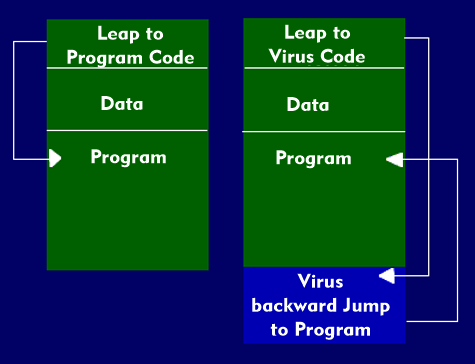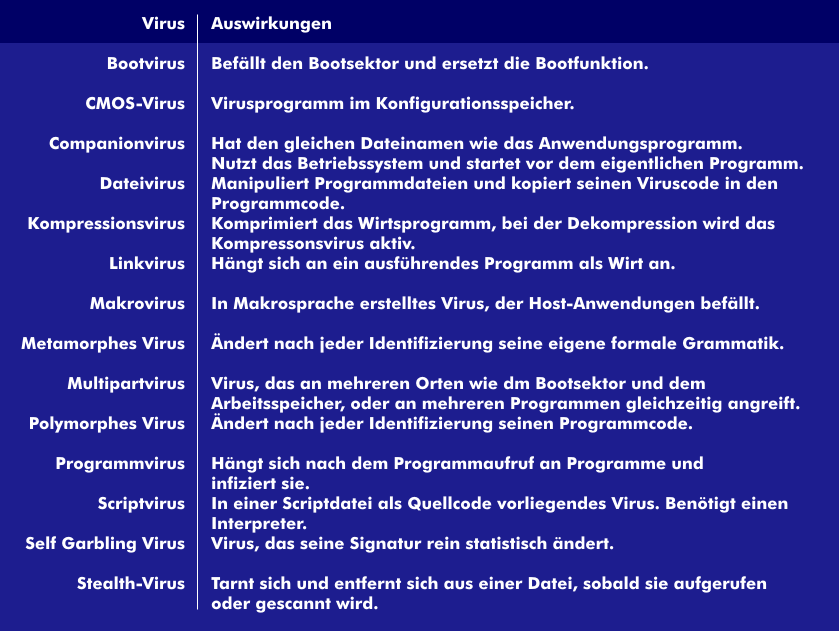virus
In a short period of time in the 1990s, the virus problem has evolved from a theoretical to a real threat tocomputers and data networks. Viruses are malicious programs that attack and damage all computers, programs and files. Therefore, viruses are divided into computer viruses, program viruses, file viruses, system viruses, script viruses and boot viruses.
A typical program virus or computer virus is a simple program that reproduces itself, copies its own virus code into the program code, hides in normal programs and whose purpose is to hinder or destroy other software and hardware by infecting them. When infected programs run, they also infect other programs and other computers they come into contact with. Once a computer virus infects a program, it can destroy programs, wipe out data, change numerical values in a spreadsheet, reformat hard disks, completely wiping out their entire data set, or do whatever damage the virus' programmer has planned.
In almost all cases, the virus goes unnoticed while it carries out its work of destruction. Virus detection by virus scanners is also becoming increasingly difficult, as viruses can change, such as metamorphic or polymorphic viruses, and newer viruses have stealth functions, such as the stealth virus, and can hide from virus scanners.
Viruses are spread over the Internet, via email attachments and downloads. They are recorded in Wildlist databases as ITW viruses and are available to users.


